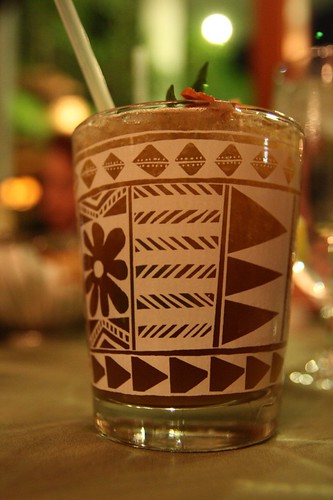Despite the idyllic setting, life was not easy in ancient Hawai'i, especially for the maka'āinana, the commoners. They lived under a system of strict rules or kapu, mostly dealing with contact with the ali'i, the royalty who owned all land and were the rulers of the islands. The likely punishment for violation of any kapu was death. The life of maka'āinana and ali'i alike were guided by the religious beliefs of these times, which featured powerful gods requiring fearsome sacrifices. These forces were presided over by their human counterparts, the kahuna, the priests of the ancient religion.

On a recent trip back to Hawai'i, I visited Mo'okini Heiau, an ancient site upon which blood sacrifices were made. The site is impressive, featuring massive stone walls, some 30 feet high, all piled by human labor. It is also incredibly old, by some reckoning it was built around 425 AD. Interestingly, some historians and local authorities say that it was not originally the fearsome place it was to become. Upon an influx or invasion of later arrivals from other pacific islands, most likely Tahiti around 1000 AD, the temple was rededicated to a new god and became a site of human sacrifice.

The heiau sits on the remote northern tip of the island among dry, wind-whipped grasslands that give way to a rocky shoreline. Entering the heiau, one's attention is immediately drawn to a bowl-shaped stone slab, it is here that the sacrifice was prepared. Further on, forbidding stone walls surround on inner keep, the purpose of which can only be imagined, for the only living Hawaiians allowed within were the ali'i and the kahuna.
As I stood in this place, a very peculiar feeling came over me. Other visitors have reported all sorts of mysterious goings on, but I experienced nothing metaphysical. Instead, I felt intense loneliness and sorrow. Above all else, this place made me sad. I suppose I am guilty of romanticizing the history of this land, and Mo'okini Heiau is a stark reminder of the dark side of that history.
I will often speak of how I wish that the kingdom of Hawai'i could have been allowed to evolve naturally into a nation-state, equal to any other on earth. But do not mistake this romantic longing as a desire for her people to return to the old ways. Some things that have been lost should remain so.

 Hapa means 'half' as in 'hapa haole' or 'half white'. This band consists of two members, one of whom is, you guessed it, not native Hawaiian.
Hapa means 'half' as in 'hapa haole' or 'half white'. This band consists of two members, one of whom is, you guessed it, not native Hawaiian.





